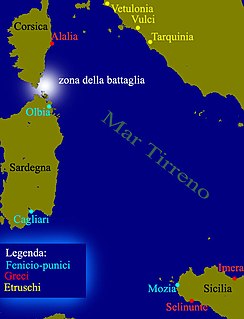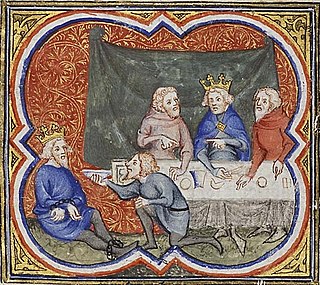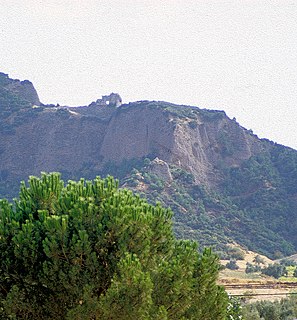 W
WThe Achaemenid conquest of the Indus Valley refers to the Achaemenid military conquest and occupation of the territories of the North-western regions of the Indian subcontinent, from the 6th to 4th centuries BC. The conquest of the areas as far as the Indus river is often dated to the time of Cyrus the Great, in the period between 550-539 BCE. The first secure epigraphic evidence, given by the Behistun Inscription, gives a date before or about 518 BCE. Achaemenid penetration into the area of the Indian subcontinent occurred in stages, starting from northern parts of the River Indus and moving southward. These areas of the Indus valley became formal Achaemenid satrapies as mentioned in several Achaemenid inscriptions. The Achaemenid occupation of the Indus Valley ended with the Indian campaign of Alexander the Great circa 323 BCE. The Achaemenid occupation, although less successful than that of the later Greeks, Sakas or Kushans, had the effect of acquainting India to the outer world.
 W
WThe Battle of An was fought during the Spring and Autumn period in 589 BCE at Hua Hill in the area of the present-day city of Jinan, Shandong between the states of Qi and Jin. It ended in a victory for the state of Jin and eventually resulted in an alliance between the two states.
 W
WThe naval Battle of Alalia took place between 540 BCE and 535 BCE off the coast of Corsica between Greeks and the allied Etruscans and Carthaginians. A Greek force of 60 Phocaean ships defeated a Punic-Etruscan fleet of 120 ships while emigrating to the western Mediterranean and the nearby colony of Alalia.
 W
WAt the Battle of Pteria in 547 BC, the Persian forces of Cyrus the Great fought a drawn battle with the invading Lydian forces of Croesus, forcing Croesus to withdraw back west into his own kingdom.
 W
WThe Battle of the Eclipse or Battle of Halys was fought between the Medes and the Lydians in the early 6th century BC. The result was a draw which led to both parties negotiating a peace treaty and ending a six-year war. According to Herodotus, the appearance of a solar eclipse at the time of battle was interpreted as an omen, and interrupted the battle.
 W
WThe Battle of Yanling was fought in 575 BC between the states of Chu and Jin at Yanling during the Spring and Autumn period of ancient China. On the Jin side, Xi Qi (郤錡) commanded the right wing whilst Luan Shu (欒書) commanded the center with Han Jue (韓厥) on the left. Prior to the battle, Shi Xie wanted to avoid battle on the basis that external enemies are necessary for internal peace. The Chu army had the numerical advantage but with the exception of the King's personal guard, it was in poor condition. The Chu army was also commanded by Zifan (子反) and Zichong (子重), who hated each other. Following Luan Shu's advice, the Jin army took a defensive posture instead of going on the offensive. By dawn the Jin armies were deployed behind a marsh and ditch, which impeded Chu troops. Fen Huang, a Jin officer, pointed out that the best Chu troops in the center were bogged down by the marsh, leaving the flanks to be held only by badly disciplined 'wild tribes of the south'. Jin chariots then charged both Chu flanks, scattering the enemy. They then proceeded to attack the center, which contained the Chu King commanding his troops. Although the Chu King's life was endangered a couple of times, Jin officers let him escape as a sign of respect. However, he was wounded by an arrow and his army was driven back.
 W
WThe Battle of Bi was fought during the Spring and Autumn period in 597 BC, between the major states of Chǔ and Jìn, in what is now modern day China. Occurring three and a half decades after the Battle of Chengpu, where Jin decisively defeated Chu, the battle was a major victory for Chu, cementing the position of its ruler King Zhuang as a hegemon among the states of the Zhou Dynasty.
 W
WThe Battle of Boju was the decisive battle of the war fought in 506 BC between Wu and Chu, two major kingdoms during the Spring and Autumn period of ancient China. The Wu forces were led by King Helü, his brother Fugai, and Chu exile Wu Zixu. According to Sima Qian's Shiji, Sun Tzu, the author of The Art of War, was a main commander of the Wu army, but he was not mentioned in the Zuo Zhuan and other earlier historical texts. The Chu forces were led by Lingyin Nang Wa and Sima Shen Yin Shu. The Wu were victorious, and captured and destroyed the Chu capital Ying.
 W
WThe eclipse of Thales was a solar eclipse that was, according to The Histories of Herodotus, accurately predicted by the Greek philosopher Thales of Miletus. If Herodotus's account is accurate, this eclipse is the earliest recorded as being known in advance of its occurrence. Many historians believe that the predicted eclipse was the solar eclipse of 28 May 585 BC. How exactly Thales predicted the eclipse remains uncertain; some scholars assert the eclipse was never predicted at all. Others have argued for different dates, but only the eclipse of 28 May 585 BC matches the conditions of visibility necessary to explain the historical event.
 W
WThe Jewish–Babylonian war was a military conflict between the Kingdom of Judah and Neo-Babylonian Empire that lasted from 601 to 586 BCE. The conflict marked the end of the Kingdom of Judah and a prolonged hiatus in Jewish independence until the Hasmonean revolt in the second century BCE. After Babylonia invaded Jerusalem it destroyed the First Temple, and started the Babylonian exile.
 W
WThe Battle of Opis, fought in September 539 BC, was a major engagement between the armies of Persia under Cyrus the Great and the Neo-Babylonian Empire under Nabonidus during the Persian invasion of Mesopotamia. At the time, Babylonia was the last major power in western Asia that was not yet under Persian control. The battle was fought in or near the strategic riverside city of Opis, north of the capital Babylon. It resulted in a decisive victory for the Persians. A few days later, the city of Sippar surrendered to the Persians and Cyrus's forces entered Babylon apparently without a fight. Cyrus was subsequently proclaimed king of Babylonia and its subject territories, thus ending the independence of Babylon and incorporating the Babylonian Empire into the greater Persian Empire.
 W
WThe overthrow of the Roman monarchy, a political revolution in ancient Rome, took place around 509 BC and resulted in the expulsion of the last king of Rome, Lucius Tarquinius Superbus, and the establishment of the Roman Republic.
 W
WThe Battle of Pelusium was the first major battle between the Achaemenid Empire and Egypt. This decisive battle transferred the throne of the Pharaohs to Cambyses II of Persia, marking the beginning of the Achaemenid Twenty-seventh Dynasty of Egypt. It was fought near Pelusium, an important city in the eastern extremes of Egypt's Nile Delta, 30 km to the southeast of the modern Port Said, in 525 BC. The battle was preceded and followed by sieges at Gaza and Memphis.
 W
WThe Persian Revolt was a campaign led by Cyrus the Great in which the province of ancient Persis, which had been under Median rule, declared its independence and fought a successful revolution, separating from the Median Empire. Cyrus and the Persians did not stop there, however, and in turn went on and conquered the Medes.
 W
WThe Scythian campaign of Darius I was a military expedition into parts of European Scythia by Darius I, the king of the Achaemenid Empire, in 513 BC. The Scythians were an East Iranian-speaking people who had invaded Media, revolted against Darius and threatened to disrupt trade between Central Asia and the shores of the Black Sea as they lived between the Danube and Don Rivers and the Black Sea. The campaigns took place in parts of what is now the Balkans, Ukraine and southern Russia.
 W
WIn 589 BC, Nebuchadnezzar II laid siege to Jerusalem, culminating in the destruction of the city and its temple in the summer of 587 or 586 BC.
 W
WThe Siege of Jerusalem was a military campaign carried out by Nebuchadnezzar II, king of Babylon, in 597 BC. In 605 BC, he defeated Pharaoh Necho at the Battle of Carchemish, and subsequently invaded Judah. According to the Nebuchadnezzar Chronicle, King Jehoiakim of Judah rebelled against Babylonian rule, but Nebuchadnezzar captured the city and installed Zedekiah as ruler.
 W
WIn the Siege of Sardis , the last decisive conflict after the Battle of Thymbra, which was fought between the forces of Croesus of Lydia and Cyrus the Great, Cyrus followed Croesus to his city. He laid siege to it for 14 days, and then captured it.
 W
WThe Siege of Tyre was waged by Nebuchadnezzar II of Babylon for 13 years from 586 to 573 BC. The siege of Tyre, in Phoenicia, has a significant connection to the Book of Ezekiel where it was prophesied that the city would fall to Babylonian forces after a years-long siege.
 W
WThe Battle of the Fetters was an engagement between Sparta and Arcadia c. 550 BCE, in which the Arcadians defeated the Spartans.
 W
WThe Battle of Thymbra was the decisive battle in the war between Croesus of the Lydian Kingdom and Cyrus the Great of the Achaemenid Empire. Cyrus, having pursued Croesus into Lydia following the drawn Battle of Pteria, met the remains of Croesus' partly disbanded army in battle on the plain north of Sardis in December, 547 BC. Even though Croesus' army was reinforced with many new men, Cyrus utterly defeated it, despite being outnumbered more or less 2:1. This proved decisive, and after the 14-day Siege of Sardis, the city and possibly its king fell, and Lydia was conquered by the Persians.